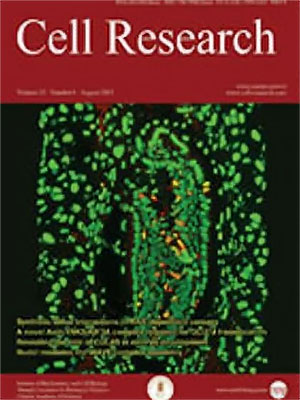
Volume 15, No 11-12, Nov 2005
ISSN: 1001-0602
EISSN: 1748-7838 2018
impact factor 17.848*
(Clarivate Analytics, 2019)
Volume 15 Issue 11-12, November 2005: 947-952
REVIEWS
AIDS and associated malignancies
Charles WOOD1 and William HARRINGTON Jr2
1Nebraska Center for Virology & School of Biological Sciences, University of Nebraska, Lincoln, NE 68588, USA
2Sylvester Cancer Center, University of Miami, Miami, FL 33136, USA
Correspondence: Charles WOOD(cwood1@unl.edu)
AIDS associated malignancies (ARL) is a major complication associated with AIDS patients upon immunosuppression. Chronically immunocompromised patients have a markedly increased risk of developing lymphoproliferative disease. In the era of potent antiretrovirals therapy (ARV), the malignant complications due to HIV-1 infection have decreased in developed nations where ARV is administered, but still poses a major problem in developing countries where HIV-1 incidence is high and ARV is still not yet widely available. Even in ARV treated individuals there is a concern that the prolonged survival of many HIV-1 carriers is likely to eventually result in an increased number of malignancies diagnosed. Malignancies that were found to have high incidence in HIV-infected individuals are Kaposi's sarcoma (KS), Hodgkin's disease (HD) and non-Hodgkin's lymphoma (NHL). The incidence of NHL has increased nearly 200 fold in HIV-positive patients, and accounts for a greater percentage of AIDS defining illness in the US and Europe since the advent of HAART therapy. These AIDS related lymphomas are distinct from their counterparts seen in HIV-1 seronegative patients. For example nearly half of all cases of ARL are associated with the presence of a gamma herpesvirus, Epstein Barr virus (EBV) or human herpesvirus-8 (HHV-8)/ Kaposi's sarcoma associated herpesvirus (KSHV). The pathogenesis of ARLs is complex. B-cell proliferation driven by chronic antigenemia resulting in the induction of polyclonal and ultimately monoclonal lymphoproliferation may occur in the setting of severe immunosuppression.
Cell Research (2005) 15, 947–952. doi:10.1038/sj.cr.7290372
FULL TEXT | PDF
Browse 1950


